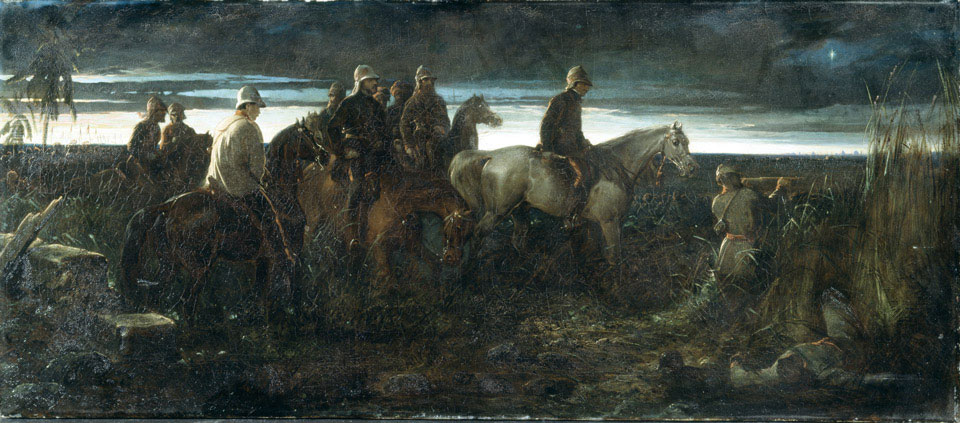
Online Collection
« Prev - 1 of 1 results - Next »
The Dawn of Victory - Lord Clyde reconnoitring the Position of the Enemy, in advance of the Relief of Lucknow, 1857
Oil on canvas by Thomas Jones Barker (1815-1882), 1862 (c).
When news of the mutiny in the Bengal Army reached England on 11 July 1857, the Prime Minister, Lord Palmerston, offered Lieutenant-General Sir Colin Campbell the position of Commander-in-Chief India in place of General George Anson who had just died of cholera. He accepted and left the following day, arriving in Calcutta in August. Having organised his troops and cleared Lower Bengal of mutineers, on 9 November he advanced with 4,500 men, all of them Europeans except for two regiments of Sikhs, to relieve the besieged garrison at Lucknow. On 14 November the Dilkoosha Palace was stormed, and two days later the relief force broke through the besiegers' lines; the Residency evacuated to Kanpur (Cawnpore) on 22 November. This painting depicts Campbell and his staff on reconnaissance in the dawn before his attack on 14 November. For his services in the suppression of the mutiny Campbell was created Baron Clyde in 1858 and made a field marshal in 1862.
NAM Accession Number
NAM. 1993-09-87-1
Copyright/Ownership
National Army Museum, Out of Copyright
Location
National Army Museum, Myth and Reality: Military Art in the Age of Queen Victoria
Object URL
https://collection.nam.ac.uk/detail.php?acc=1993-09-87-1

